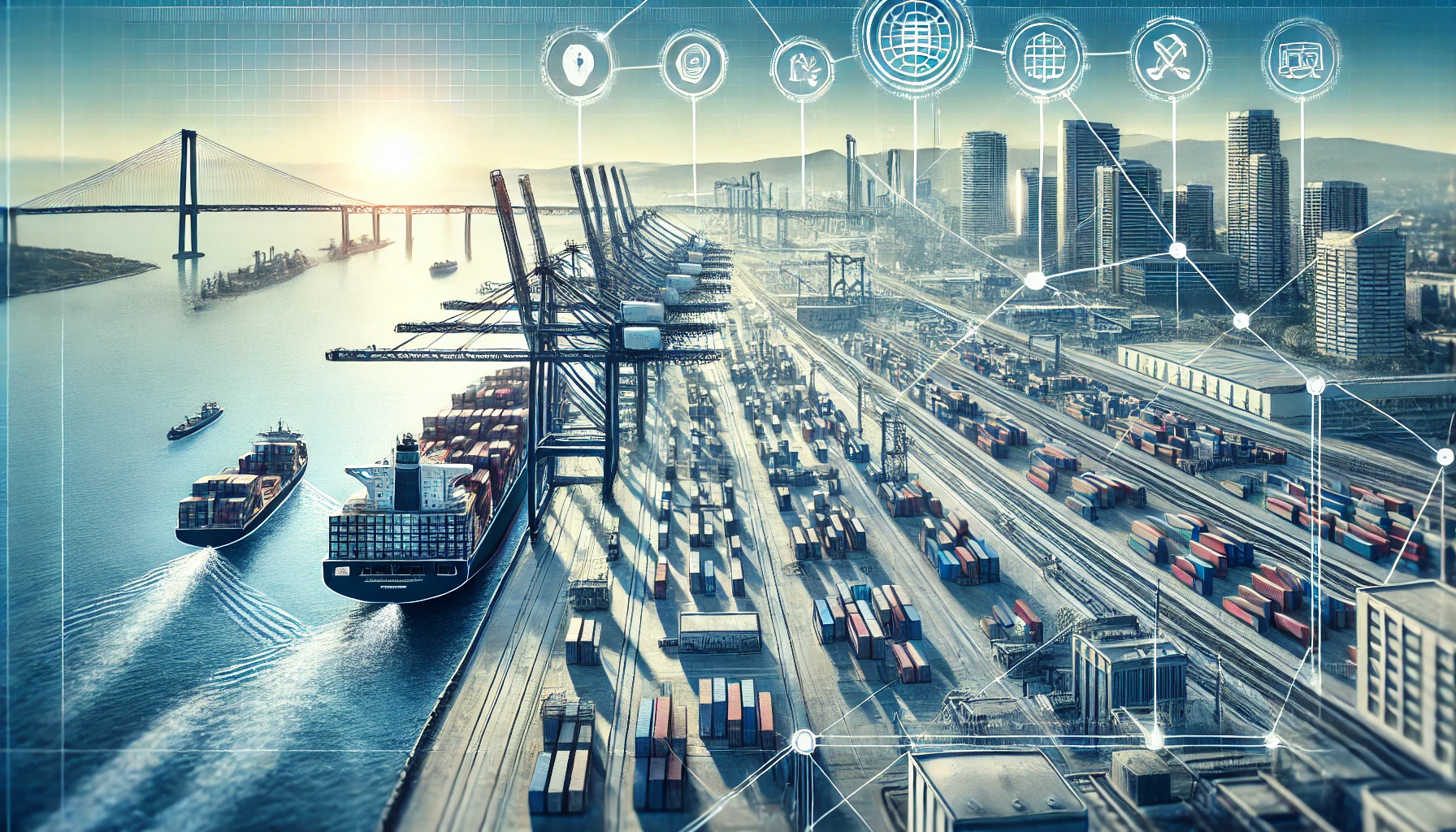Trade Development in San Diego: Boosting Economic Growth and Global Competitiveness
San Diego has long been recognized as a strategic hub for trade, leveraging its unique geographical position, robust infrastructure, and diverse economy. As trade development continues to play a pivotal role in the city’s economic growth, efforts are being made to enhance San Diego’s global competitiveness. This article delves into the current state of trade development in San Diego, exploring key initiatives, challenges, and future prospects.
Table of Contents
San Diego’s Strategic Importance in Global Trade
San Diego’s proximity to the U.S.-Mexico border, coupled with its access to the Pacific Ocean, makes it an essential gateway for international trade. The Port of San Diego, the Tijuana-San Diego border, and the city’s two international airports are crucial components of the region’s trade infrastructure, facilitating the movement of goods and services across borders.
The Role of the Port of San Diego
The Port of San Diego serves as a critical link in the global supply chain, handling a wide range of cargo, including automobiles, bulk commodities, and breakbulk cargo. The port’s facilities are equipped to handle both domestic and international trade, with a focus on expanding its capabilities to accommodate the growing demand for goods.
In recent years, the Port of San Diego has embarked on several initiatives to modernize its infrastructure, improve efficiency, and reduce environmental impact. These efforts include the expansion of terminal facilities, the adoption of green technologies, and the implementation of more streamlined customs processes. These developments are expected to enhance the port’s capacity to handle larger volumes of trade and attract new business opportunities.
Cross-Border Trade with Mexico
San Diego’s location at the U.S.-Mexico border positions it as a key player in cross-border trade. The Tijuana-San Diego border is one of the busiest land border crossings in the world, with billions of dollars’ worth of goods passing through annually. The region’s close economic ties with Mexico have fostered a strong manufacturing and logistics sector, with numerous companies operating on both sides of the border.
Efforts to streamline cross-border trade have been a priority for local and federal authorities. The recent implementation of the United States-Mexico-Canada Agreement (USMCA) has further strengthened trade relations between San Diego and Mexico, providing a framework for more efficient and predictable trade. Initiatives such as the Cross Border Xpress (CBX) and the Otay Mesa East Port of Entry are also aimed at reducing congestion and improving the flow of goods across the border.
Challenges Facing Trade Development in San Diego
While San Diego’s trade infrastructure is robust, several challenges must be addressed to sustain and enhance trade development in the region.
Infrastructure and Congestion
One of the most pressing challenges is the need for continued investment in infrastructure. The region’s trade facilities, including the Port of San Diego and border crossings, face capacity constraints and congestion issues, particularly during peak trade periods. Upgrading and expanding these facilities is essential to accommodate the growing volume of trade and prevent bottlenecks that could hinder economic growth.
Regulatory and Environmental Considerations
Regulatory and environmental considerations also influence trade development in San Diego. Compliance with international trade regulations, customs requirements, and environmental standards can be complex and time-consuming for businesses engaged in cross-border trade. Balancing economic growth with environmental sustainability is a key challenge for policymakers and industry stakeholders.
Efforts to address these challenges include the adoption of green technologies at the Port of San Diego, initiatives to reduce emissions from transportation, and the development of more efficient customs processes. Collaborative efforts between local, state, and federal agencies are crucial in navigating these regulatory and environmental hurdles.
Future Prospects for Trade Development in San Diego
Despite the challenges, the future of trade development in San Diego remains bright. Several key trends and initiatives are expected to drive growth in the coming years.
Embracing Technology and Innovation
The adoption of technology and innovation is set to play a significant role in the future of trade development in San Diego. The use of advanced logistics technologies, such as blockchain, artificial intelligence, and automation, is expected to enhance the efficiency of trade processes and reduce operational costs. These technologies can streamline supply chains, improve transparency, and enable real-time tracking of goods.
San Diego’s position as a hub for innovation and technology makes it well-suited to lead in the adoption of these cutting-edge solutions. Partnerships between technology companies, logistics providers, and trade authorities are likely to foster the development of innovative solutions that can address the challenges facing the region’s trade infrastructure.
Expanding International Trade Partnerships
Expanding international trade partnerships is another key focus for San Diego’s trade development efforts. The city’s strong ties with Mexico, combined with its strategic location on the Pacific Rim, provide opportunities to strengthen trade relations with other countries in the Asia-Pacific region and beyond.
Efforts to establish new trade agreements and strengthen existing ones are expected to open up new markets for San Diego businesses. The city’s participation in international trade missions, trade fairs, and business forums will also play a crucial role in promoting San Diego as a global trade hub.
Fostering a Skilled Workforce
A skilled workforce is essential to support the continued growth of trade in San Diego. The region’s educational institutions, including universities and technical colleges, are increasingly focusing on developing programs that cater to the needs of the trade and logistics sectors. Workforce development initiatives aimed at providing training and upskilling opportunities are expected to enhance the region’s competitiveness in the global trade arena.
Investments in education and training, coupled with partnerships between industry and academia, will ensure that San Diego has the talent pool necessary to support the growth of its trade sector.
Conclusion
Trade development in San Diego is a dynamic and evolving landscape with significant potential to drive economic growth and enhance the region’s global competitiveness. While challenges such as infrastructure constraints, regulatory hurdles, and environmental considerations exist, the city’s strategic location, robust trade infrastructure, and commitment to innovation position it for success.
As San Diego continues to embrace technology, expand international trade partnerships, and foster a skilled workforce, it is poised to strengthen its position as a key player in global trade. The future of trade development in San Diego looks promising, with the potential to create new opportunities for businesses, boost the local economy, and solidify the region’s status as a leading trade hub on the West Coast.







